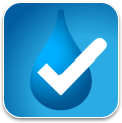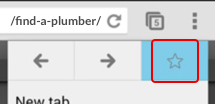Cloth mask
A cloth mask should fit securely around the face, specifically covering the nose and the mouth areas. The mask should fit snugly on your face and be secured by ties at the back of your head or ear loops. If you are using a mask with ear loops, you can use a plastic clip or tie to join the ends together at the back of your head to make sure it fits snugly on your face.
Make sure that your mask does not have holes or any unfiltered one-way valves. This can result in breathing out the virus if you have coronavirus (COVID-19).
Wash your hands for at least 20 seconds with soap and water, or use hand sanitiser that is made up of over 60% alcohol, before putting on your mask and after taking it off. Avoid touching your eyes, nose, or mouth at all times and store used cloth face masks in a plastic bag until you have an opportunity to wash them.
Surgical mask (single use)
- Before putting on the mask, wash your hands for at least 20 seconds with soap and water, or use a hand sanitiser that is made up of over 60% alcohol.
- Check for defects in the mask, such as tears or broken loops.
- Position the coloured side of the mask outward.
- If present, make sure the metallic strip is at the top of the mask and positioned against the bridge of your nose.
- If the mask has:
- ear loops: hold the mask by both ear loops and place one loop over each ear
- ties: hold the mask by the upper strings. Tie the upper strings in a secure bow near the crown of your head. Tie the bottom strings securely in a bow near the nape of your neck
- dual elastic bands: pull the bottom band over your head and position it against the nape of your neck. Pull the top band over your head and position it against the crown of your head.
- Mould the bendable metallic upper strip to the shape of your nose by pinching and pressing down on it with your fingers.
- Pull the bottom of the mask over your mouth and chin.
- Be sure the mask fits snugly.
- Don’t touch the mask once in position.
If the mask gets soiled or damp, replace it with a new one.
Face shields
Ensure they are properly designed to cover the sides of the face and below the chin. Reusable face shields should be cleaned and disinfected after each use. Disposable face shields should only be worn for single use. Ensure you follow the instructions as per manufacturers guidelines.
 High Risk COVIDSafe Plan - Construction - (763.83 KB)
High Risk COVIDSafe Plan - Construction - (763.83 KB)  Managing the risk of exposure to coronavirus (COVID-19) – a checklist for employers - ()
Managing the risk of exposure to coronavirus (COVID-19) – a checklist for employers - ()  High Risk COVIDSafe Plan Attachment - Construction - (65.23 KB)
High Risk COVIDSafe Plan Attachment - Construction - (65.23 KB)  How to prepare your COVIDSafe Plan and High Risk COVIDSafe Plan Attachment - (76.51 KB)
How to prepare your COVIDSafe Plan and High Risk COVIDSafe Plan Attachment - (76.51 KB)  Workplace attendance register - ()
Workplace attendance register - ()  FACT SHEET: COVID Safe Plan for employers - (73.01 KB)
FACT SHEET: COVID Safe Plan for employers - (73.01 KB)  FACT SHEET: COVID Safe Plan for employees - (147.23 KB)
FACT SHEET: COVID Safe Plan for employees - (147.23 KB)  An industry guideline to manage COVID-19 on new housing sites v1.0 - (42.29 KB)
An industry guideline to manage COVID-19 on new housing sites v1.0 - (42.29 KB)  An industry guideline to manage COVID-19 on renovation and repair sites v1.0 - (42.89 KB)
An industry guideline to manage COVID-19 on renovation and repair sites v1.0 - (42.89 KB) 




